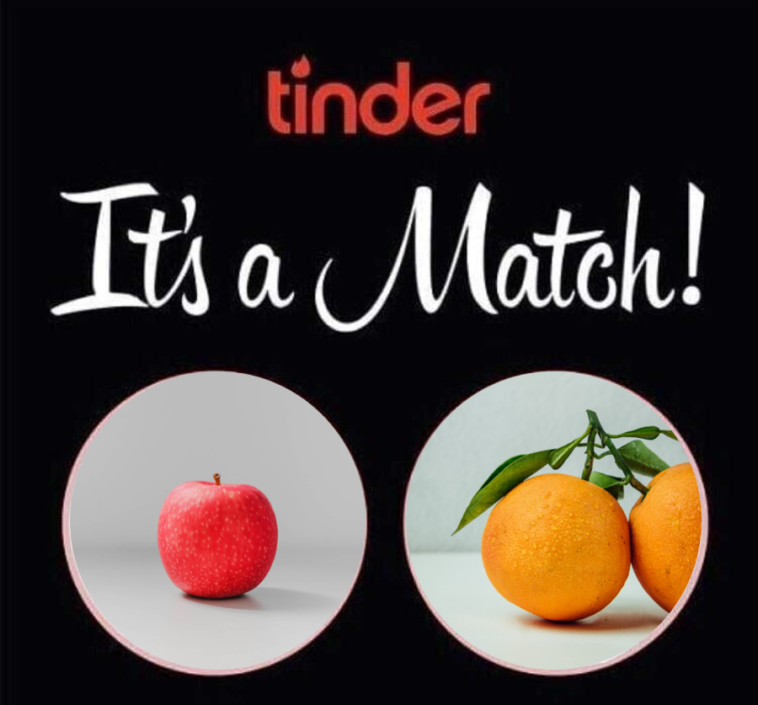h2>Dating : The Economics of Tinder
One of my favourite things about Economics has always been its application to everyday life. And as a (mostly unsuccessful) user of Tinder, I have also come to enjoy it purely from a scientific perspective — if you can’t date them, study them amiright? As a nostalgic Economics major/tutor, here is my view on the economic concepts evident in dating apps (specifically Tinder). TL,DR: Homo-economicus is alive, well, and within a 5km radius of you.
Concept 1: Asymmetric information — a.k.a The “Lemons” principle.
Essentially this theory says that when a buyer and a seller don’t have the same amount of information, there can be issues around the value of a thing; resulting in the buyer getting a dud. Enter Mark, 26 (CEO at Self Employed); whose tinder profile has 4 perfectly curated photos of him — with his Mom (“I love women, in fact I have even met a few in real life”), in running gear on a popular hiking trail (“I am willing to fight 800 tourists for the Insta. Also, I do cardio, which means I do, in fact, have a heart. #gainz”), with a dog (“Lol I’m actually a big softie under all this fitnessss”), and a graduation photo with 4 other people (“I have friends and we are all tertiary educated. I will not be taking further questions at this time.”).
The asymmetric information comes in when you actually meet Mark, and after 35 minutes of “conversation”, 85% of which was about the Chai Latte you ordered and the COVID-19 pandemic, it is evident that Mark’s mum (with whom he is still residing) is the only woman with whom he is able to converse; and that the only up-to-date photo on his profile is the graduation photo. Which was taken last year when he finally graduated from the 4 year degree he started at age 19.
In short, the seller had information which was not revealed to the buyer, resulting in a Lemon. And when life gives you lemons, they will drastically misinterpret how well the date went, and ask you on a second date while hiding behind tinder chat where their grasp of the GIF keyboard makes up the majority of their appeal.
Concept 2: Anchoring and competition effects
Anchoring is a cognitive bias that causes people to rely too heavily on an initial piece of information (the “anchor”) when making decisions. In the Tinder world, I have found that the anchor in a lot of my left/right swiping decision is generally how attractive I perceive myself to be — or more specifically: 1) how attractive I think I am vs. how attractive I think the guy is, and also 2) how attractive I think other people will find him — or how stiff the competition will be.
The first seems quite intuitive — if I think I’m a solid 6.5/10 when I get my contour right, the range of right-swipe attractiveness I’m looking for will likely be between 5/10 and 8/10 (in my opinion). By working on this range, I allow room for the 5s who are just unphotogenic but overall quite wonderful, and the 8s who might just have a great camera but might also be quite a catch. But most importantly, working on a range like this ensures that I will also fall within their range — meaning a match is more likely. Obviously this isn’t applicable to everyone — Kyle, who had the potential to be a strong 7 in the right lighting but became a convincing 4.5 when accounting for his shitty personality, could rate himself a 9/10; in which case I would fall outside his range. That said, Kyle sounds like his BMW 1 series with the number plate “CRYPTO”* that he bought with the earnings of his 0.0002 Bitcoin is probably the most interesting thing about him. (*based on real vehicles I have seen with my own eyes before I had to burn them out immediately afterwards).
The second one is a bit more interesting. In an excellent TED talk by Hannah Fry called “The Mathematics of Love”, she talks about how the people who are most successful on dating sites are those who create polarised opinions on how attractive they are. For example, someone like Ryan Reynolds (an objective 10 and the complete package) would get fewer messages than someone like Benedict Cumberbatch or Eddie Redmayne (you either love them or hate them) given that we all have a crippling fear of rejection and horribly low self-esteem (see above. We are reverse Kyle). It’s for this reason that I am unlikely to want to endure the inevitable rejection of swiping right on Roberto, 29 (Model at Boss Models) whose 8 abs look like they could effectively be used to grate cheese; but would much rather go for Brandon, 26 (Mechanical Engineer) who looks like someone your friends would tolerate until they use “he wasn’t even that good looking, sweetie, you can do way better” to comfort you after the break up — not necessarily because I like Brandon better, but because I think that he would be less in demand by, you know, everyone else; and therefore more likely to requite the love, per se.
Concept 3: Signalling
Anyone who took an ECON 101 class at University will likely be familiar with the toad analogy. Essentially the theory is that male toads find their mates by croaking. The deeper the croak, the larger the toad; and in the toad world, size matters. However, a smaller toad (who therefore has a higher pitched croak) is still better off croaking than not croaking, because silent toads are assumed to be small — even if it’s just a large toad with a frog in his throat (LOLpleasedateme).
In the Tinderverse it appears that the “Prince Charming is a Frog” trope remains scarily accurate. The bros have realised that women appear to agree that size matters (gutter, meet mind), and have taken to adding their height as a mandatory attribute on their profiles — even if they don’t have much to croak about. “5’6” tall because apparently that matters” — I hate to break it to you, Chad, but I have female friends who would likely be able to peer out over your Classic Taper hairdo, even without heels on. However, had Chad not croaked at all, I would have had only his relative height in comparison to the DJ Booth at our local club for reference, which could ultimately result in me assuming the worst. “Is Chad even in normal human proportions? Is Chad maybe just a tiny man-human who I will need to lift into a booster seat on our first movie date?”. So good on ya, Chad, for croaking with the assets you’ve got — at least now I know that with 10cm heels and some careful choreography, we can still look good in our TikTok videos.




